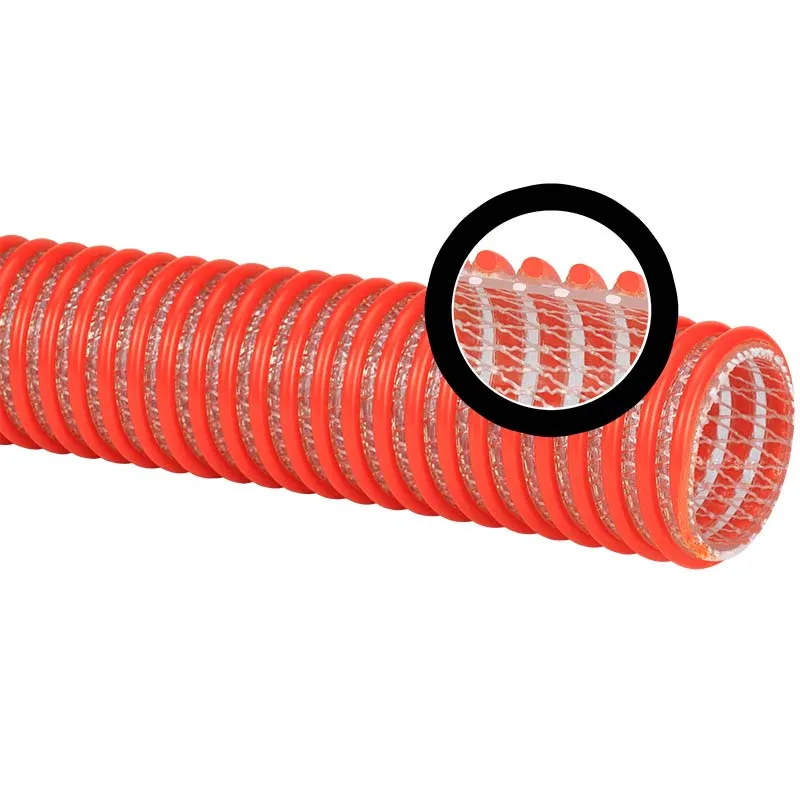pvc air hose vs rubber
PVC Air Hose vs. Rubber Air Hose A Comprehensive Comparison
When it comes to air hoses, two of the most popular materials used are PVC (polyvinyl chloride) and rubber. Each offers distinct advantages and drawbacks, making them suitable for different applications. Understanding these differences can help users make an informed choice based on their specific needs.
Durability and Weather Resistance
Rubber air hoses are renowned for their superior durability. They can withstand extreme temperatures, ranging from the cold of winter to the heat of summer, without becoming brittle or losing flexibility. This makes rubber hoses an excellent choice for outdoor use or in environments where temperature fluctuations are common. Furthermore, rubber is resistant to UV rays and ozone, which means it won't degrade quickly when exposed to sunlight or harsh chemicals.
On the other hand, PVC air hoses are more vulnerable to temperature changes. While they perform well in moderate conditions, they can become rigid in cold weather and may not handle high temperatures as effectively as rubber. However, PVC hoses are often engineered to be resistant to certain chemicals and abrasions, giving them a competitive edge in specific circumstances.
Flexibility and Weight
One of the notable benefits of PVC air hoses is their lightweight nature. This makes them easier to handle, transport, and store, which can be particularly advantageous for portable applications. Users who need to drag their hose around job sites might prefer PVC for its ease of use.
In terms of flexibility, rubber hoses are often superior. They can be more easily bent and maneuvered around tight corners, which is crucial when working in constrained spaces. In contrast, PVC hoses can become stiff, especially in cooler temperatures, which may limit their usability in certain scenarios.
pvc air hose vs rubber

Cost Considerations
When comparing costs, PVC air hoses generally come at a lower price point than rubber hoses. This makes PVC an attractive option for budget-conscious consumers or those who do not require the high performance attributes of rubber. However, it's important to consider the long-term investment; while rubber hoses may have a higher upfront cost, their durability and longevity can make them more economical over time.
Applications and Usage
PVC air hoses are well-suited for light-duty applications, such as inflating tires or powering pneumatic tools in home or garden settings. They are often used in environments where flexibility and portability are more important than extreme durability.
Rubber air hoses, conversely, excel in heavy-duty applications. They are commonly used in construction, automotive repair, and industrial settings, where reliability under demanding conditions is paramount. The ability to withstand rough handling and varied temperatures makes rubber the preferred choice for professional uses.
Conclusion
Ultimately, the choice between PVC and rubber air hoses depends on the specific needs of the user. Those looking for a lightweight, cost-effective option for light-duty tasks may lean towards PVC. In contrast, professionals or users requiring a robust, flexible solution for demanding environments will likely find rubber hoses more suitable. Understanding the pros and cons of each material helps ensure that you select the right air hose for your application, maximizing efficiency and function while minimizing potential issues.
-
Top Quality Oxy Acetylene Hoses for Sale Fit for Welding DemandsNewsJul.28,2025
-
The Future of Pneumatic Air Tubes in IndustryNewsJul.28,2025
-
Superior and Reliable LPG Hose Pipe Solutions for Every NeedNewsJul.28,2025
-
Exceptionally Durable and Versatile Premium Braided PVC TubingNewsJul.28,2025
-
Best Adapters for Connecting Garden Hose to PVC Pipe ConnectionsNewsJul.28,2025
-
The Essential Role of LPG Hoses in Safe and Efficient Gas DistributionNewsJul.16,2025














